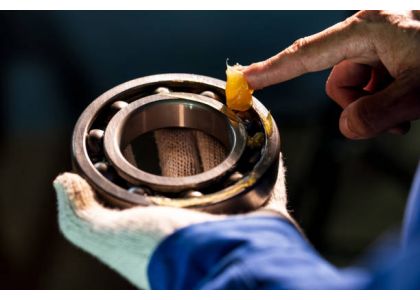INDUSTRY NEWS
Exploring the World of Bearings: A Comprehensive Guide

Introduction:
The bearing industry plays a crucial role in the smooth functioning of various mechanical systems. Bearings are essential components that enable rotational movement while reducing friction. This article aims to provide an informative overview of the bearing industry, including its history, types of bearings, and their applications.
History of Bearings:
The concept of bearings dates back thousands of years. Ancient civilizations, such as the Egyptians, used lubricated wooden logs to reduce friction in their chariots. Over time, advancements in materials and engineering led to the development of more sophisticated bearing designs.
Types of Bearings:
Ball Bearings:
Ball bearings are the most common type used in a wide range of applications. They consist of rolling steel balls held within a circular raceway, reducing friction and facilitating smooth rotation. Ball bearings are widely employed in automotive systems, electric motors, and household appliances.
Ball Bearings
Roller Bearings:
Roller bearings are designed with cylindrical, tapered, or spherical rollers to withstand heavy loads. They find extensive use in industrial machinery, construction equipment, and agricultural machinery.
Roller Bearings
Thrust Bearings:
Thrust bearings are specialized bearings capable of handling axial loads. They allow components to move relative to each other along the axial direction. Thrust bearings can be found in automotive powertrains, marine propellers, and heavy-duty equipment.
Thrust Bearings
Plain Bearings:
Plain bearings, also known as bushings, provide support and reduce friction through a sliding motion. They are commonly used in applications where self-lubrication and low maintenance are desirable, such as in agricultural machinery and hydraulic systems.
Plain Bearings
Importance of Bearings in Industry:
Automotive Sector:
The automotive industry heavily relies on bearings for various components, including engines, transmissions, steering systems, and wheel assemblies.
Manufacturing and Machinery:
Bearings are crucial in industrial machinery such as pumps, compressors, conveyors, and machine tools. They enable smooth and precise movement, contributing to overall operational efficiency.
Aerospace and Defense:
In aerospace applications, bearings are utilized in critical systems, including aircraft engines, landing gear, and control surfaces. The reliability and performance of bearings are of utmost importance in these environments.
Energy and Renewables:
The energy sector, particularly wind turbines and solar power systems, requires bearings for efficient rotational movement in both horizontal and vertical orientations.
Conclusion:
The bearing industry has evolved significantly over time, catering to the diverse needs of various sectors. Ball bearings, roller bearings, thrust bearings, and plain bearings are just a few examples of the wide range of options available. Understanding the different types of bearings and their applications can help engineers, manufacturers, and users optimize performance, reduce friction, and extend the lifespan of machinery and equipment.